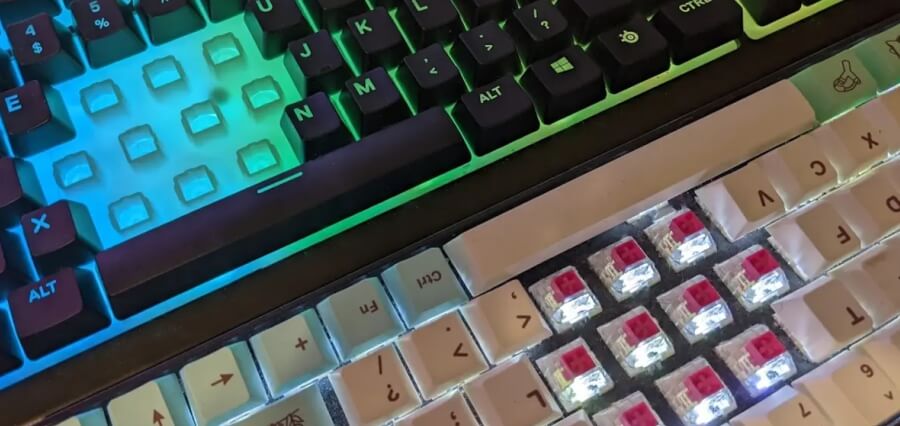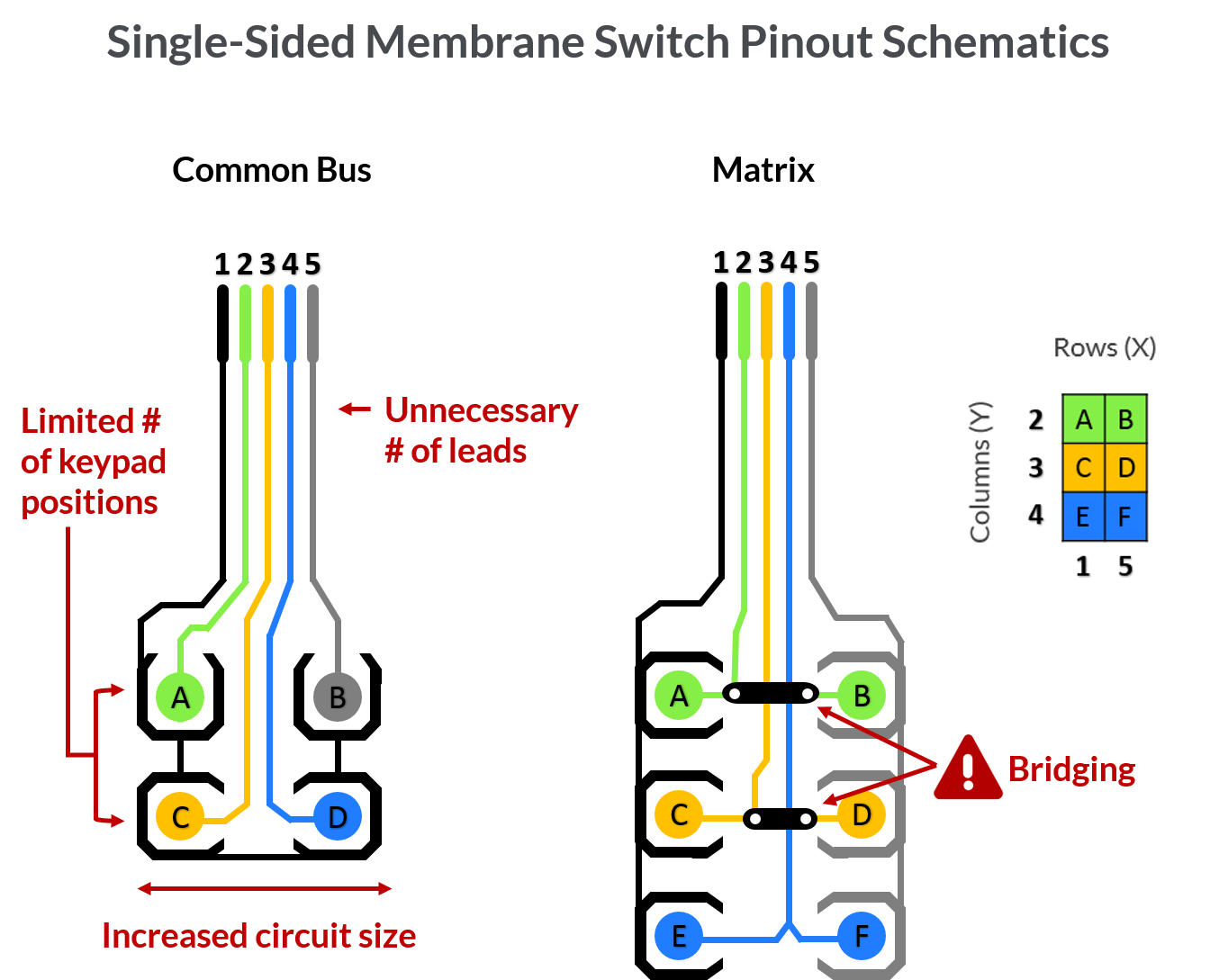Understanding Membrane Switches Over: The Trick to Long Lasting and Reputable Controls
Membrane switches over represent a crucial aspect of modern user interface style, mixing functionality with resilience in various applications. As we discover the complexities of membrane layer buttons, it becomes clear that their duty in improving control systems is both complex and extensive, elevating questions about exactly how ideal to leverage their capacities in future advancements.
What Are Membrane Switches?
Membrane switches are an innovative remedy in the realm of interface technology, integrating functionality and design effortlessly. These devices act as an interface between individuals and electronic systems, integrating numerous parts right into a compact format. Usually built from flexible, thin layers of materials, membrane layer switches are developed to respond to touch, enabling users to engage with equipment and electronic devices properly.
The main aspects of a membrane layer switch include a printed circuit layer, graphic overlay, and a spacer layer that protects against unexpected activation. The visuals overlay can be tailored to show brand name identification or customer preferences, boosting visual appeals while guaranteeing usability. Membrane switches are typically used in different applications, consisting of clinical devices, customer electronic devices, and industrial devices, owing to their sturdiness and resistance to environmental aspects such as dampness and dust.
Among the essential benefits of membrane layer switches is their capacity to endure deterioration, making them optimal for high-traffic settings. Furthermore, they are lightweight and call for minimal room, permitting for cutting-edge styles in product growth. In general, membrane layer switches stand for a functional and reliable option for contemporary digital interfaces, marrying modern technology with user-centric style principles.

Exactly How Membrane Layer Switches Work
The operation of membrane layer switches over hinges on a basic yet reliable device that translates user input right into electronic signals. These buttons contain multiple layers, normally consisting of a visuals overlay, a spacer layer, and a circuit layer. When a user presses the switch, the top layer flaws, enabling a conductive aspect in the circuit layer to reach a matching conductive pad on the bottom of the visuals overlay. This get in touch with shuts the circuit and sends out an electronic signal to the tool, showing that the switch has been triggered.
The style of membrane buttons can differ, however they commonly incorporate domes or responsive elements to provide responses to the individual, boosting the overall experience. The materials used in membrane switches, such as polyester or polycarbonate, add to their longevity and resistance to environmental variables, consisting of dampness and dirt. The printed circuits are normally encapsulated, which secures them from wear and tear over time.

Advantages of Membrane Layer Buttons
One of the primary benefits of membrane layer buttons is their versatility in design, permitting them to be personalized to satisfy particular user demands and visual needs. This flexibility includes various sectors, where various shapes, dimensions, and shades can be utilized to improve user interaction and visual allure.
In addition, membrane layer switches are click here for more understood for their toughness. Constructed from robust products, they are immune to dirt, moisture, and physical wear, which considerably extends their lifespan contrasted to traditional mechanical switches. This toughness makes them particularly appropriate for high-traffic atmospheres and applications needing longevity.

Moreover, membrane layer switches use a structured profile, leading to a thinner design that can be integrated into various tools without adding bulk. This function not just boosts the aesthetic appeal but likewise adds to a more ergonomic item layout.

Applications of Membrane Layer Buttons
Flexible and straightforward, membrane buttons locate applications throughout a wide range of markets, including medical devices, consumer electronic devices, and industrial equipment. In the medical field, these switches are indispensable to gadgets such as analysis devices, patient surveillance systems, and mixture pumps, where reliability and ease of cleansing are essential. Their capability to hold up against severe settings and preserve performance makes them optimal for such applications.
In customer electronics, membrane layer buttons are used in products like microwaves, washing devices, and push-button controls - membrane switch. Their smooth layout permits for instinctive interface, improving the general customer experience while giving toughness and resistance to tear and use
Industrial tools likewise gains from membrane buttons, specifically in control panels for machinery and automation systems. These buttons use defense against dust and dampness, making sure constant efficiency in difficult atmospheres. Moreover, their customizable features enable producers to customize them to particular operational requirements, boosting efficiency and performance.
Selecting the Right Membrane Switch
When picking a membrane button, it is essential to consider various variables that influence performance and viability for particular applications. The primary considerations include ecological problems, responsive responses, sturdiness, and style specs.
First, examine the operating official site atmosphere; switches revealed to wetness, chemicals, or extreme temperatures require certain materials to make certain long life and functionality. Next off, review the demand for responsive feedback. Depending on individual interaction, some applications may take advantage of a responsive feedback to verify activation, while others may prefer a non-tactile design for aesthetic reasons.
Longevity is one more critical variable; membrane switches should be designed to hold up against regular use, impacts, and abrasion. Guarantee the selected switch can sustain the anticipated lifecycle, specifically in high-usage circumstances.
Conclusion
In conclusion, membrane changes serve as necessary parts in the layout of dependable and resilient control systems across various industries. The versatility of membrane layer changes enables for customized solutions that meet certain functional needs, reinforcing their value in contemporary technology.
Membrane switches stand for a critical facet of modern-day interface style, mixing functionality with strength in different applications.Membrane switches are an innovative service in the realm of individual interface innovation, incorporating functionality and style flawlessly. Generally created from flexible, slim layers of materials, membrane layer buttons are developed to respond to touch, making it possible for customers to communicate with machinery and electronic gadgets properly.
The layout of membrane switches can differ, but they commonly integrate domes or tactile components to supply comments to click over here now the customer, improving the general experience.In final thought, membrane switches serve as vital components in the design of resilient and trusted control systems across various markets.